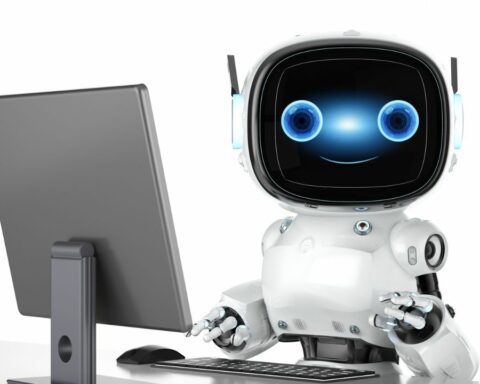Child development is a process of profound significance, as it plays a pivotal role in shaping the leaders of tomorrow. However, this journey is far from purely scientific; it involves a delicate balance of art and science. In this article, we will explore the intricacies of child development, highlighting how nurturing creativity and imagination, building emotional intelligence, and cultivating critical thinking are all part of the art of child development.
In academic support, it’s essential to recognize the role of tools like EssayPro in aiding students in enhancing their essay writing abilities. As child development requires a balance between art and science, essay writing benefits from a harmonious blend of creativity and structure.
As we delve into the science of child development, it becomes clear that a similar approach can be applied to academic growth. Understanding the scientific principles behind child development, such as brain development and evidence-based methods, parallels the importance of research and evidence in academic writing.

The Art of Child Development
Nurturing creativity and imagination
Nurturing creativity and imagination is a truly magnificent aspect of child development. Encouraging free play and exploration allows children to develop their creativity organically. Caregivers and educators can unlock a child’s potential for innovation and problem-solving by providing an environment that supports experimentation and self-expression.
Building emotional intelligence
Another essential aspect of child development is emotional intelligence. Teaching children to recognize and manage their emotions, develop empathy, and communicate effectively are all skills that will serve them well as future leaders. By creating an emotionally supportive environment, we help children develop the resilience and self-awareness needed to navigate the complexities of life.
Cultivating critical thinking and problem-solving
Effective leadership is built on the foundation of critical thinking and problem-solving skills. Encouraging curiosity and questioning in children fosters their ability to think critically. Providing opportunities for problem-solving activities, whether through puzzles, games, or real-world challenges, allows them to develop the analytical skills necessary for success.
The Science of Child Development
Understanding developmental milestones
Child development is not a one-size-fits-all process. Every child is unique, and recognizing individual variations in development is vital to providing appropriate support.
Brain development and its implications
According to MyPaperHelp, developing a child’s brain is a fascinating subject. Early experiences play a crucial role in wiring the brain, and factors like nutrition and stimulation significantly impact cognitive growth. By understanding the science behind brain development, caregivers and educators can create environments that maximize a child’s potential.
Evidence-based approaches to early education
High-quality early childhood education programs significantly impact a child’s development, shaping their future success. These programs offer a nurturing environment fostering creativity, emotional intelligence, and critical thinking skills while promoting physical, cognitive, and socio-emotional milestones.
Investing in high-quality early childhood education ensures children receive the foundation they need to thrive. These programs provide children with the skills and knowledge they need to navigate the complexities of life, setting them on a path toward success. It is crucial to implement evidence-based teaching methods to ensure that children receive the best possible support during their early years. The benefits of early childhood education are immense and long-lasting, making it a worthwhile investment for both individuals and society.

The Intersection of Art and Science
To mold tomorrow’s leaders, we must recognize the value of a holistic approach that integrates the art and science of child development. Fostering creativity and emotional intelligence while understanding developmental milestones and brain development creates well-rounded individuals ready to take on leadership roles.
Caregivers and educators play a pivotal role in this process. Through their collaborative efforts, children can experience a balance between creativity and structure in their learning environments. By recognizing the importance of their roles and continuously seeking self-improvement, they can provide the best possible support to the next generation of leaders.
While technology has its place, it’s essential to be aware of the potential pitfalls of relying too heavily on AI in child development. AI struggles to understand emotional nuances and cannot replace the warmth of human connection. Over-reliance on technology can diminish hands-on parenting and teaching, potentially robbing children of essential human interactions. Additionally, ethical concerns and privacy issues related to the use of AI in child development should not be overlooked.
The Importance of Ethical Considerations
In the ever-evolving landscape of technology, it is vital to consider the ethical implications of integrating AI into child development. Ensuring that AI applications are designed with children’s best interests in mind is paramount. This includes safeguarding their privacy, protecting their data, and preventing potential harm from AI-driven interventions. Ethical guidelines and regulations must be established when utilizing AI in educational settings.
Balancing AI with Human Interaction
While AI can offer valuable educational tools and resources, it should complement, not replace, human interaction. Human touch, empathy, and emotional connection are irreplaceable aspects of child development. Over-reliance on AI can lead to a lack of genuine human connection, potentially hindering a child’s social and emotional development. Balancing technology and human interaction is essential to provide a well-rounded educational experience.
The Need for Continuous Monitoring and Evaluation
Regular assessments and feedback from caregivers, educators, and experts can help identify areas where AI may fall short and require improvements. Flexibility and adaptability in using AI tools are crucial to meet the evolving needs of children and provide the best possible support for their development.
Conclusion
Child development is a harmonious blend of art and science, a delicate dance that shapes tomorrow’s leaders. Nurturing creativity, building emotional intelligence, and cultivating critical thinking are just as crucial as understanding developmental milestones, brain development, and evidence-based approaches.
By recognizing the holistic nature of this journey and the essential role of caregivers and educators, we can create a generation of well-rounded, capable leaders. Remember, while AI can be a helpful tool, it should never replace the human touch in the development of our future leaders.
For academic writing assistance, consider seeking help from reliable, professional services like WritePaper, which can provide additional support on your journey to academic success.










